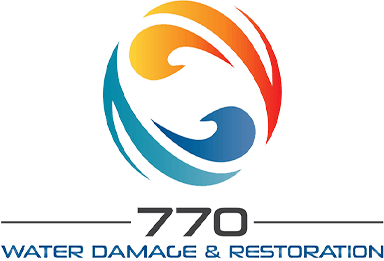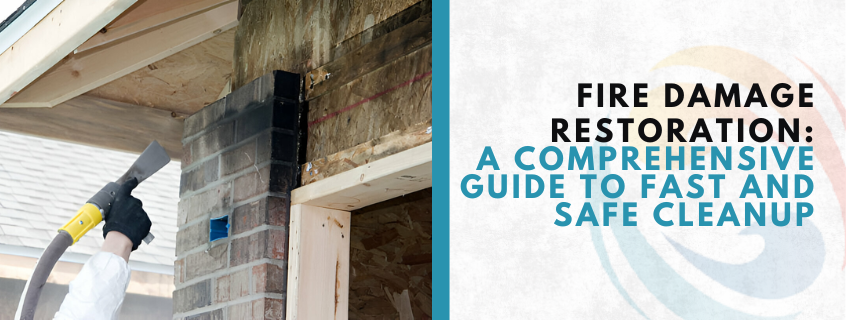When fire strikes, the aftermath can be overwhelming. The immediate response is often a mix of shock and confusion. However, swift and organized action is crucial to ensure a fast and safe cleanup, reduce long-term damage, and begin the road to recovery. This guide will walk you through every step of the fire damage restoration process, helping homeowners regain control and restore their property.
1. Prioritize Safety and Secure the Property
Before anything else, ensure the area is safe. Do not re-enter your home until the fire department or local authorities have confirmed that it is structurally sound. Fires can cause hidden weaknesses in beams, flooring, and ceilings, and re-entry before inspection poses a serious risk.
Once cleared, secure the property to prevent theft, vandalism, or additional weather-related damage. Board up broken windows and doors, and place temporary fencing around the site if necessary. This protects both your home and others who may accidentally wander into a dangerous environment.
A fast and safe cleanup begins with these essential precautions.
2. Assess the Extent of the Damage
A thorough damage assessment is the cornerstone of effective restoration. Begin by documenting everything. Take photographs and videos from multiple angles. This will be vital for insurance claims.
Key areas to examine include:
- Structural Integrity: Inspect walls, ceilings, and floors for signs of warping, charring, or collapse.
- Electrical Systems: Fires can damage wires behind walls. A licensed electrician should evaluate the system before power is restored.
- Water Damage: Ironically, water used to extinguish fires can lead to mold and further structural degradation if not addressed swiftly.
For a detailed evaluation and to identify hidden risks, you may want to explore professional services like this comprehensive water damage restoration solution.
3. Begin Water Removal and Drying
Water removal is one of the most time-sensitive tasks following a fire. Left unaddressed, standing water can quickly lead to mold infestations, wood rot, and further contamination. Fast and safe cleanup of water damage is non-negotiable.
Use industrial-grade equipment such as:
- Submersible pumps
- Wet/dry vacuums
- High-capacity dehumidifiers
- Air movers
Focus on drying out walls, flooring, carpets, and furniture. Open windows for ventilation and remove any saturated materials that cannot be salvaged.
To ensure thorough drying and avoid secondary damage, consider consulting professional restoration services who specialize in water extraction and moisture control.
4. Clean and Deodorize Smoke and Soot Damage
Soot and smoke residues are acidic and can deteriorate surfaces over time. Furthermore, they can cause respiratory problems and persistent odors. Cleaning this residue thoroughly is essential.
Steps to follow:
- Dry Cleaning Sponges: Use on walls, ceilings, and solid surfaces to remove soot.
- HEPA Vacuums: Great for upholstery and rugs.
- Deodorization Tools: Air scrubbers, ozone machines, and thermal foggers neutralize odors and cleanse the environment.
Hiring a team with advanced equipment ensures a fast and safe cleanup. Look for companies that provide specialized fire damage cleanup in El Segundo, especially if you’re local.
5. Salvage and Restore Personal Belongings
Not everything has to be discarded. With professional cleaning techniques, many household items can be restored to pre-fire condition.
Categories of salvageable items include:
- Electronics and appliances (after being inspected by a technician)
- Clothing and textiles (dry-cleaning or ozone treatment)
- Documents and photographs (freeze-drying or digitization)
Document everything that was damaged and keep receipts for cleaning or replacement. This will streamline your insurance claims.
For sentimental or high-value items, your best bet is working with trusted restoration specialists who offer tailored recovery solutions.
6. Repair and Rebuild Damaged Structures
After cleaning comes the rebuild. This phase can vary in scope from patching drywall to replacing entire sections of the house.
Typical repairs may include:
- Installing new insulation and drywall
- Repairing or replacing flooring
- Repainting interior and exterior surfaces
- Fixing plumbing or electrical systems
This is also an excellent time to update parts of your home for better fire resistance. Consider flame-retardant materials and updated circuit breakers.
To ensure everything is handled professionally and safely, look into full-service restoration teams that manage both cleanup and reconstruction.
7. Prevent Future Fire Hazards
The recovery phase is also the perfect opportunity to implement safety upgrades:
- Smoke Detectors: Install in every bedroom, hallway, and main living space.
- Fire Extinguishers: At least one on each level of the home.
- Escape Plans: Create and rehearse an evacuation plan with your family.
- Electrical Inspections: Especially if your home is older or has outdated wiring.
These steps not only safeguard your family but may also reduce insurance premiums.
A home fortified against future fires is the best outcome of a fast and safe cleanup process.
8. Consider Professional Fire Damage Restoration Services
While some homeowners attempt DIY fire restoration, the complexity and health risks involved often make professional help the safer and more efficient choice.
Advantages of hiring professionals include:
- Expert Knowledge: Technicians understand the science of smoke behavior, residue removal, and structural drying.
- State-of-the-Art Equipment: From moisture meters to air purifiers, the right tools make all the difference.
- Insurance Navigation: Many companies assist with documentation, making the claims process smoother.
For example, this El Segundo-based team is known for fast response times and comprehensive care.
When the goal is a fast and safe cleanup, partnering with experienced professionals gives you peace of mind.
Final Thoughts: Moving Forward with Confidence
Recovering from a fire is never easy, but with the right steps, it is possible to restore your property and peace of mind. By focusing on safety, efficient restoration, and future prevention, you turn a traumatic event into an opportunity for resilience.
Remember, the foundation of successful recovery lies in a fast and safe cleanup process. Acting quickly, engaging professionals, and making informed decisions all contribute to a smooth path forward.
For immediate assistance and professional guidance, don’t hesitate to reach out to certified fire and water damage restoration experts. They’re equipped to support you at every stage of recovery.
Conclusion
Fire damage restoration is a multifaceted process that requires prompt action, thorough assessment, and careful execution. By following these steps, property owners can ensure a fast and safe cleanup, restoring their homes or businesses to pre-fire conditions. Whether opting for DIY methods or professional services, the key is to act swiftly and prioritize safety throughout the restoration journey.
Frequently Asked Questions (FAQs)
What should I do immediately after a fire in my home or business?
After a fire, prioritize safety by ensuring the property is declared safe by authorities before re-entering. Once cleared, contact 770 Water Damage & Restoration for immediate assistance. We offer 24/7 emergency services and can arrive within 60 minutes in most cases. Our certified technicians will assess the damage, begin water extraction, and initiate the restoration process promptly.
How does 770 Water Damage & Restoration handle fire and smoke damage?
At 770 Water Damage & Restoration, we specialize in comprehensive fire and smoke damage restoration. Our services include:
Smoke and Soot Removal: Using specialized equipment to eliminate smoke odors and residues.
Structural Cleaning: Cleaning and sanitizing affected areas to prevent further damage.
Restoration and Repair: Rebuilding and restoring damaged structures to their pre-fire condition.
Our team is IICRC certified and uses eco-friendly cleaning agents to ensure effective and safe restoration.
How does water damage from firefighting efforts affect my property?
Water used to extinguish a fire can lead to significant damage, including:
Structural Weakening: Moisture can compromise the integrity of walls, ceilings, and floors.
Mold Growth: If not addressed promptly, water can promote mold development, leading to health risks.
Electrical Hazards: Water can damage electrical systems, posing potential safety threats.
770 Water Damage & Restoration provides comprehensive water damage restoration services, including water extraction, drying, and mold remediation, to mitigate these risks.
What is the typical fire damage restoration process?
The restoration process at 770 Water Damage & Restoration involves several key steps:
Emergency Response: Immediate assessment and stabilization of the property.
Water Extraction and Drying: Removal of standing water and drying of affected areas.
Smoke and Soot Removal: Cleaning and deodorizing of smoke-affected areas.
Structural Repair and Restoration: Rebuilding and restoring damaged structures.
Throughout the process, we work directly with your insurance provider to ensure a smooth and efficient restoration experience.



